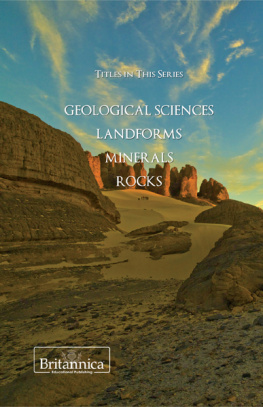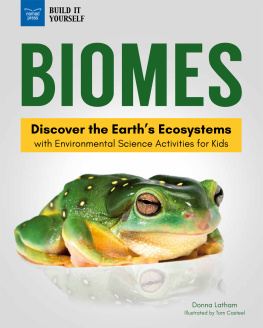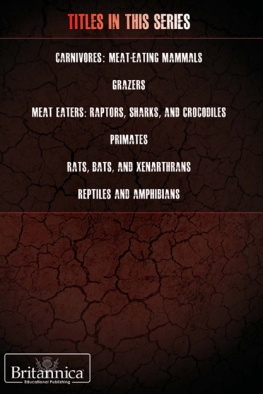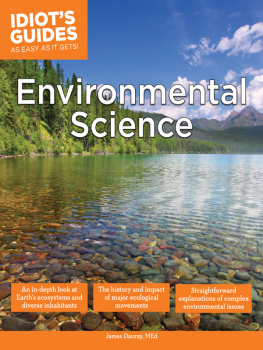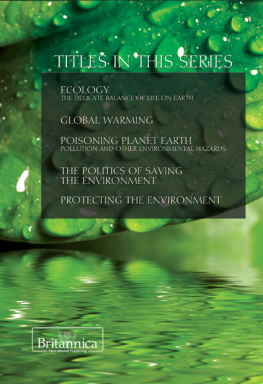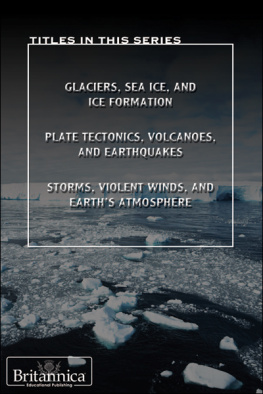BIOMES AND ECOSYSTEMS
THE
LIVING EARTH
BIOMES AND ECOSYSTEMS
EDITED BY JOHN P. RAFFERTY, ASSOCIATE EDITOR, EARTH AND LIFE SCIENCES

Published in 2011 by Britannica Educational Publishing
(a trademark of Encyclopdia Britannica, Inc.)
in association with Rosen Educational Services, LLC
29 East 21st Street, New York, NY 10010.
Copyright 2011 Encyclopdia Britannica, Inc. Britannica, Encyclopdia Britannica, and the Thistle logo are registered trademarks of Encyclopdia Britannica, Inc. All rights reserved.
Rosen Educational Services materials copyright 2011 Rosen Educational Services, LLC.
All rights reserved.
Distributed exclusively by Rosen Educational Services.
For a listing of additional Britannica Educational Publishing titles, call toll free (800) 237-9932.
First Edition
Britannica Educational Publishing
Michael I. Levy: Executive Editor
J.E. Luebering: Senior Manager
Marilyn L. Barton: Senior Coordinator, Production Control
Steven Bosco: Director, Editorial Technologies
Lisa S. Braucher: Senior Producer and Data Editor
Yvette Charboneau: Senior Copy Editor
Kathy Nakamura: Manager, Media Acquisition
John P. Rafferty: Associate Editor, Earth and Life Sciences
Rosen Educational Services
Jeanne Nagle: Senior Editor
Nelson S: Art Director
Cindy Reiman: Photography Manager
Matthew Cauli: Designer, Cover Design
Introduction by Jeanne Nagle
Library of Congress Cataloging-in-Publication Data
Biomes and ecosystems / edited by John P. Rafferty. 1st ed.
p. cm. -- (The living earth)
In association with Britannica Educational Publishing, Rosen Educational Services.
Includes bibliographical references and index.
ISBN 978-1-61530-378-6 (eBook)
1. Biotic communitiesJuvenile literature. 2. EcologyJuvenile literature.
3. Evolution (Biology)Juvenile literature. I. Rafferty, John P.
QH541.14.B56 2011
577dc22
2010015407
On the cover: A bee gathers nectar from the flower of a catnip plant. Interdependence and
biodiversity are keys to the survival of the worlds biomes and ecosystems. Hope Lourie Killcoyne
On page : A rainbow arches over the rainforest in Malaysia. Though defined by diverse
biota and climates, Earths biomes and ecosystems share one common elementmajestic,
natural beauty. AFP/Getty Images
On pages : A view of Scout Lake in Deschutes
National Park, Oregon, with Mount Jefferson in the background. Erik Hovmiller
Photography/Flickr/Getty Images
CONTENTS
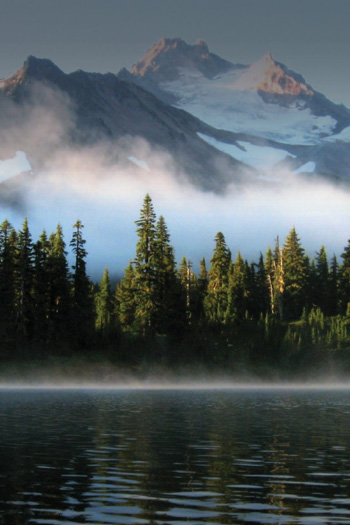
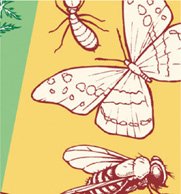
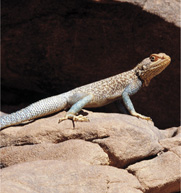
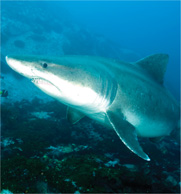


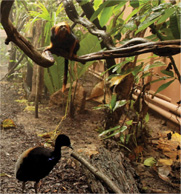

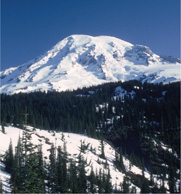


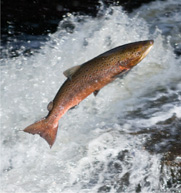
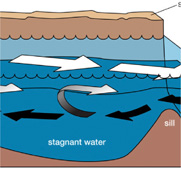

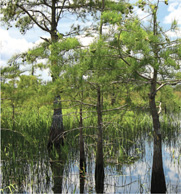
INTRODUCTION

O utside of a zoo or perhaps a traveling circus, you wouldnt expect to encounter an elephant in the urban wilds of a North American or European city. Likewise, palm trees dont sprout in Alaska, nor do fresh-water fish abound in the saline waters of the worlds oceans. Thats because the environmental conditions in one region of the planet are not conducive to all life-forms. Every living thing on Earth has a specific place to call home, geographic areas that scientists have grouped into life zones called biomes and ecosystems. This book explains these concepts in detail, as well as the ways in which life is created and sustained, how living organisms and their nonliving surroundings keep nature in balance, and the importance of maintaining a healthy diversity among Earths creatures and their habitats.
Scientifically speaking, life is something of a top-down proposition. At the uppermost level is the biosphere, which is the part of the Earth system that supports life. The biosphere wends its way down to less sizeable components, including biomes and ecosystems. Each biome is a vast region of the planet that is home to similar types of plants and animals, which have adapted to said regions climate. In general, ecosystems are similar to biomes, but abiotic, or nonliving, elements also help to define them. Smaller units within the biosphere include communities and habitats.
The study of Earths biomes and ecosystems begins with an investigation into the biosphere itself. Thin only in relation to the Earths diameter, the biosphere covers the entire planetary surface, reaching up into the the atmosphere and down into the soil and rock beneath Earths surface. This stratums life-giving properties are powered by radiant energy from the Sun. Plants and other plantlike organisms soak up this energy and convert it to chemical energy, chiefly carbohydrates, through photosynthesis. The flow of energy is passed through the food chain as plants are consumed by herbivores, which are in turn consumed by meat-eaters. At each link in the chain, energy potency is diluted. The majority of energy stored in plant matter never makes it into the food chain, however. It decays to form the soil upon which plants grow.
Energy is not the only thing passed along in the biosphere. A number of key nutrients necessary for cell growth are cycled through plants, animals, and the smaller organisms that break each living thing down after it dies. The six major nutrients thus cycled are hydrogen, oxygen, carbon, nitrogen, sulfur, and phosphorus. Changes to any one nutrient cycle can significantly alter the ability of plants and animalseven humansto survive and reproduce.
As the biosphere has evolved over billions of years, so, too, have the life-forms it sustains. Over time, each has affected the other. For example, sea-dwelling bacteria, the earliest known life-forms on Earth, obtained nutrients from an atmosphere made up of significantly higher concentrations of carbon dioxide than today. Some bacteria acquired the ability to metabolize carbon dioxide and give off oxygen as a by-product. After vast amounts of carbon dioxide had been processed by these organisms, oxygen flooded the atmosphere, paving the way for the expansion of the biosphere and the evolution of creatures that could live on the land. Severe fluctuations in temperature such as those that occur during an ice age, changes to the dissolved oxygen content in the seas, and other climatic or ecological events have necessitated that the flora and fauna of any given time either adapt or risk extinction. Natural occurrences, such as fire or volcanic activity, and the actions of humansincluding over-hunting or -fishing and encroachment on feeding territories for housing and developmentalso have played a role in the evolution or extinction of certain species of plants and animals.
Next page







